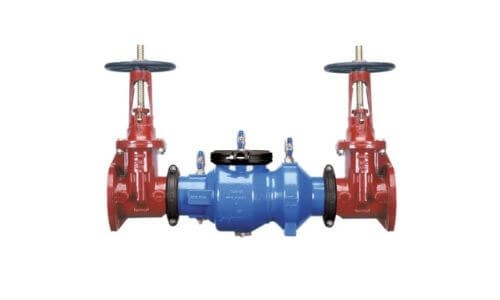Do I Need to Test for Backflow Essential for My Water
Do I Need to Test for Backflow Essential for My Water
Blog Article
This article which follows involving Commercial Backflow Testing is incredibly informative. Don't skip it.

Yes, you need to backflow test your home's water to make sure that the water is free of toxic substances and unsafe degrees of chemicals. You should not try to do backflow screening on your own because of the tools called for and area for mistake. We suggest that you call a specialist plumber every number of years to examine your water.
Backflow Can Impact Both You and Your City
Numerous cities establish backflow guidelines because hazardous backflow can affect the public water system along with a single building. Fortunately, modern-day cities have backflow tools in place that safeguard the water system that originates from many homes and business residential or commercial properties. The actual threat originates from watering systems, which can harm the water system with toxic fertilizers, manure, as well as various other chemicals.
What Creates Backflow?
A normal cause of heartburn is a loss of water pressure that triggers the water to siphon back into the water system. An instance is clearing out a paint container utilizing a pipe. You fill up the paint container up with water, leaving the tube in the pail. After a long time, there is a loss in water pressure and the tube starts to suck the water back right into the water. As you can visualize, there are currently chemicals from the paint that are entering the water, possibly posing a hazard. Regrettably, many people are not also familiar with heartburn testing, however there are many reasons it's so important.
Backflow Testing is Called For by Regulation in Particular Cities
Depending on where you live, you might actually be needed by law to backflow test your regulation. Iowa City keeps a record of all buildings served by the city's water supply.
You Can Stop Heartburn
The main function of a backflow device is to prevent water from flowing in reverse right into your water supply. Plumbing professionals set up the tool on the pipes in your house to make sure that the water only streams in the proper direction.
What is Heartburn?
In short, backflow is when water moves upwards-- the contrary direction in the plumbing system. This is also called "backpressure." When the water moves in this instructions, it can blend with damaging contaminants and present a threat.
Call a Plumber to Examine for Backflow Prior To It is Far too late
A plumbing firm can rapidly examine your home's water to identify if there are any kind of dangerous chemical degrees. And also if you do discover that your water has high levels of toxic substances, a plumber can conveniently install a backflow avoidance tool.
Yes, you need to backflow test your house's water supply to make certain that the water is complimentary of contaminants and also damaging levels of chemicals. Numerous cities develop heartburn standards since hazardous heartburn can impact the public water supply in addition to a single building. A typical cause of heartburn is a loss of water stress that triggers the water to siphon back into the water supply. After some time, there is a loss in water pressure and the pipe begins to suck the water back right into the water supply. The primary purpose of a heartburn device is to prevent water from moving backwards into your water supply.
Backflow Testing: What Is It, and Why Is It Necessary?
What Is Backflow?
Backflow is exactly what you might imagine this somewhat gross-sounding word to mean. It is contaminated water that has reversed flow, and as a result, enters into the clean water lines of homes and businesses. Backflow is typically caused by a significant change in water pressure. This can be due to a water main break, frozen pipes or an unexpectedly high demand on the water system. It can occur at any cross-connection between clean and dirty water in residential, commercial or industrial water lines. And the worst part – backflow can contain hazardous materials like human waste, pesticides or chemicals. Needless to say, it poses very, very serious health concerns, not to mention the potential for a heap-load of expensive stress!
Backflow Prevention and Testing
In order to safeguard against backflow in standing structures, a backflow prevention device should be installed by a trusted team of professionals. Once installed, if there should ever be an unexpected or dramatic change in water pressure, the device will prevent backflow from entering into the clean water supply system. But, again, it’s important that this device is properly installed by a professional so that they can test it and ensure that the clean water line remains contaminant free. This really is key.
While personal standards and responsibilities should maintain certain routine testing requirements, there are already municipal codes in place that require annual testing of these backflow prevention devices. This ensures that they are functioning properly and that no hazardous contaminants are spilling out into the clean water supply. If, however, testing of any device is not completed on time, you should know that a property or business’ water supply might be interrupted, and the property owner might even face fines. So, to avoid this from happening to you, we recommend scheduling a backflow test well in advance.
Fortunately, here at Tritan, we can help schedule and carry out backflow testing for your property. We provide a variety of backflow-related services, including prevention device installation and testing. Call us today and make sure that this stressful problem doesn’t happen to you and your property or business.
https://www.tritan-plumbing.com/blog/2018/february/backflow-testing-what-is-it-and-why-is-it-necess/

I found that piece on What is Backflow Testing? while doing a lookup on the search engines. Be sure to take the time to distribute this page if you enjoyed reading it. Thanks a lot for going through it.
Comprehensive support here. Report this page